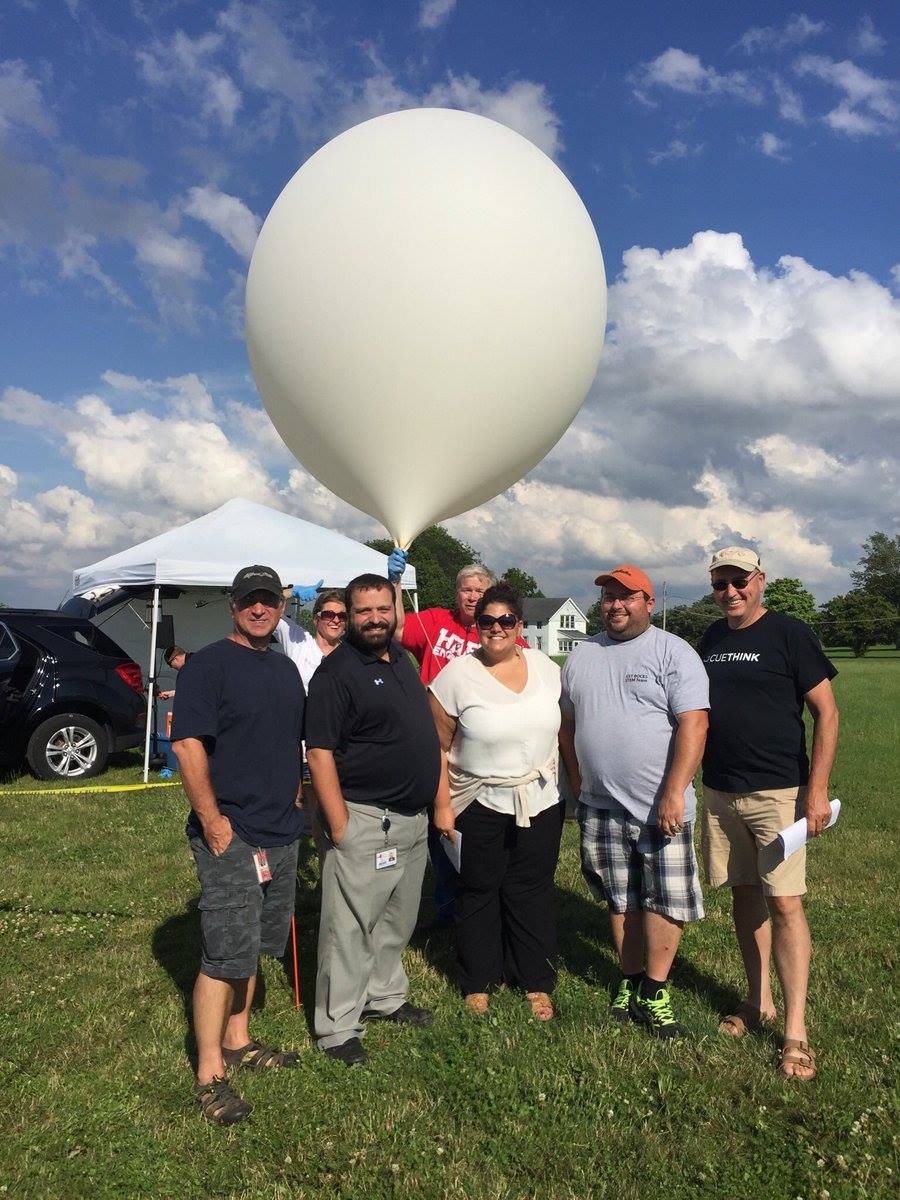Atmospheric Weather Balloons
Your atmospheric balloon (weather balloon) is the first step to flight since that’s what’s going to get you off the ground. There are a number of types of balloon and suppliers that you can choose from based on your location and objective. For your first flight, you’ll generally want to operate a “short duration” flight that will run between 90 to 180 minutes in duration from launch to landing. These will generally be latex atmospheric weather balloon just like the National Weather Service uses. We use Totex atmospheric weather balloons for our flights. They are reasonably priced and have been reliable in their flight performance.
Balloon Suppliers:
- Overlook Horizon (if you buy from us it helps support our flights 😉)
- Kaymont Balloons
- High Altitude Science
- Hwoyee
- SSTL Meteorological Balloon Supply
- Random Engineering
- Scientific Sales
Weather Balloon Sizes
Balloon sizes are measured by the measured mass of the balloon in grams. The size of your balloon will depend on how heavy your payload is and how high you want to travel to. We recommend starting small. We started with a 600g balloon which can usually get you to 80,000+ ft. for stunning imagery while keeping the cost down. There are several online calculators to help you with selecting a size for your weather balloon. Most will ask you about your intended ascent rate. You should keep your ascent rate around 5 m/s as a starting point, but anything between 4 m/s and 6 m/s should be acceptable. Faster ascent rates will result in the flight being shorter, the balloon bursting lower and more wake turbulence on your payload. Slower ascent rates will result in longer flights, higher altitude and less wake turbulence. Too slow, and your balloon may never burst!
Balloon Calculator Tools
Weather Balloon Integrity
Latex atmospheric weather balloons are very sensitive. You’ll need to take extra special care when handling the balloon. First, keep the balloon stored in a dark, cool and dry space until you’re ready to start filling it. The temperature and particularly the UV rays from the sun can weaken or damage the balloon if left in the sunlight. When you’re ready to begin your inflation procedures, all members of your launch team should wear latex or vinyl gloves to keep the oils from your skin off of the balloon. The oils from your skin can weaken the latex and cause a premature burst. Also, avoid pinching the balloon as that can create micro-tears in the material. Is it the end of the world if you touch the balloon with bare hands? No, but why risk a premature burst when you don’t have to?
Inflating & Sealing the Weather Balloon
You’ll need to fill your weather balloon with a lifting gas to ascend through the atmosphere and seal it before launch. It can take anywhere from 15 to 30 minutes to inflate and seal your balloon. If you’re timing out your launch schedule, plan on at least 25 minutes from the moment you turn on the gas valve to the moment you’ve sealed off the balloon. See these pages for more details:
- Lifting Gas
- Attaching the Payload

